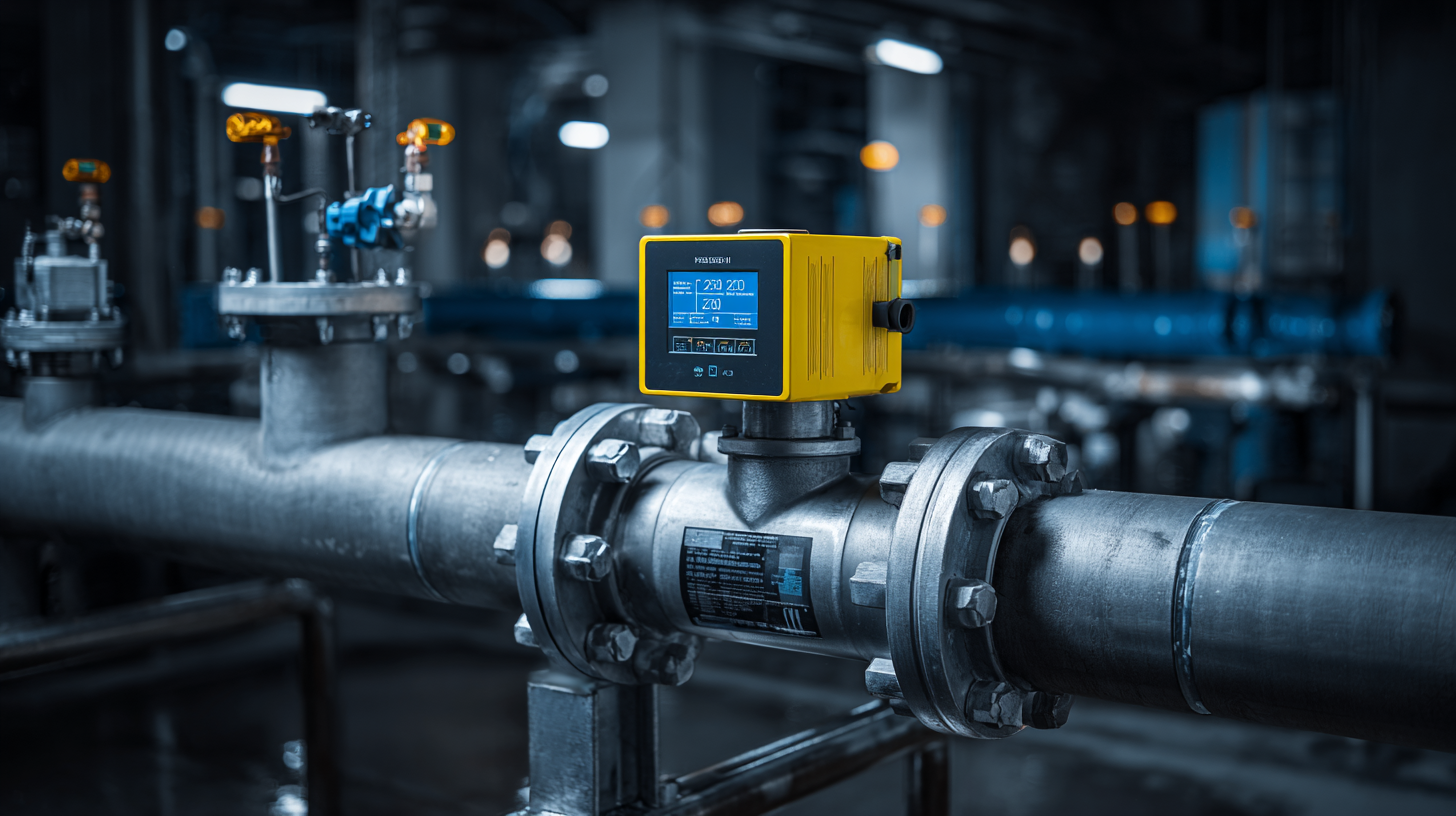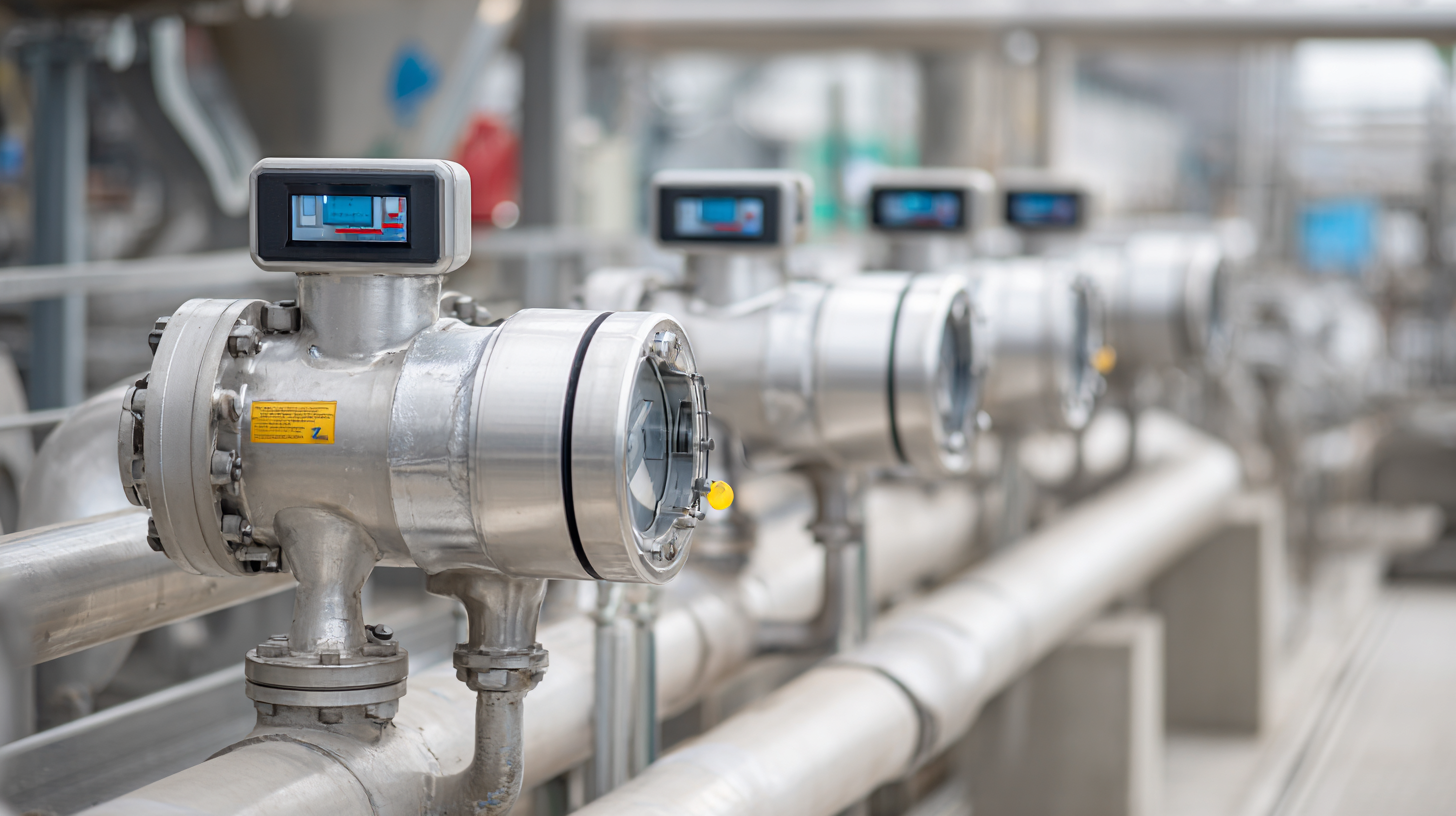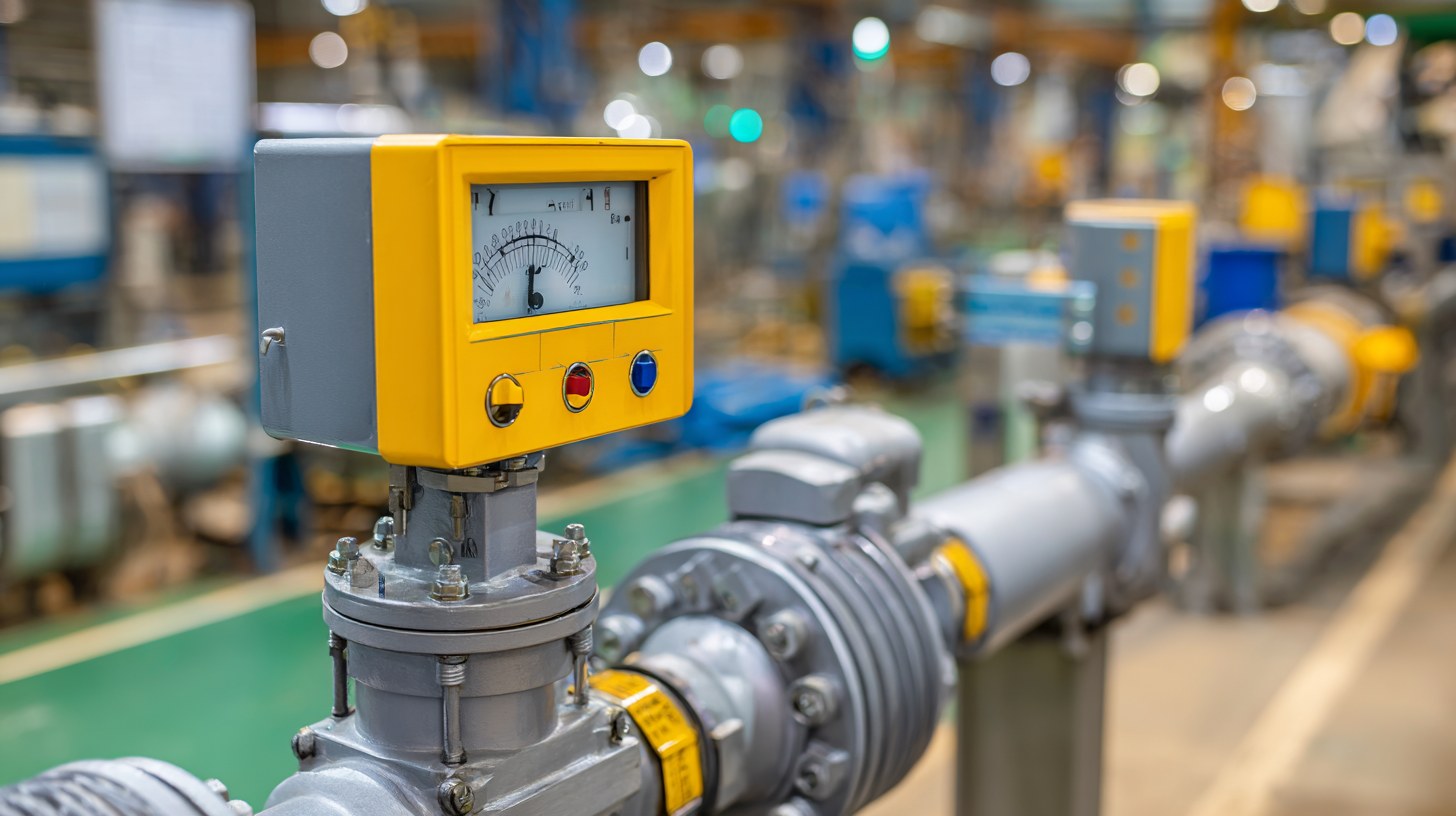7 Best Flow Meter Types for Accurate Measurement in 2023
In the ever-evolving landscape of industrial measurement and control, the accuracy of flow measurement plays a crucial role in optimizing operational efficiency and reducing costs. As highlighted in the recent market analysis by Grand View Research, the global flow meter market is projected to reach $8.5 billion by 2025, growing at a compound annual growth rate (CAGR) of 5.6%. This growth underscores the increasing reliance on precise flow measurement technologies across various sectors, including water treatment, oil and gas, and food and beverage industries.

With numerous Flow Meter Types available, each tailored to specific applications and conditions, it is essential for professionals to understand their distinct characteristics and advantages. This guide will explore the seven best flow meter types for accurate measurement in 2023, providing insights into their operational principles and ideal use cases, ensuring informed decision-making for industrial applications.
Understanding Flow Meters: An Overview of Key Types in 2023
Flow meters are essential instruments used across various industries to measure the flow of liquids and gases accurately. As 2023 unfolds, understanding the distinguishing types of flow meters becomes increasingly important for optimizing processes and ensuring efficiency. Among the key contenders are thermal, differential pressure, Coriolis, ultrasonic, vortex, magnetic, and turbine flow meters, each offering unique advantages depending on the application.
In a rapidly evolving technological landscape, the integration of AI and IoT technologies into flow measurement systems is transforming how organizations manage and enhance key performance indicators (KPIs). IoT-enabled smart sensors are emerging as vital tools in applications such as agriculture, where they monitor environmental factors critical for crop health. Additionally, advancements in metrological instrumentation are paving the way for improved accuracy in flow measurement, particularly with the ongoing developments in hydrogen blending technology. The potential for bio-inspired sensors, designed for greater sensitivity and adaptability, highlights the versatility of flow measurement technology as industries continually seek efficiency and innovation.

Top 7 Flow Meter Types: Features and Applications Explained
Flow meters are essential devices used across various industries to measure the flow rate of liquids and gases accurately. Understanding the types of flow meters available can help professionals select the right one for their specific applications.
Among the top choices are electromagnetic, ultrasonic, and turbine flow meters, each with unique features and applications.
Electromagnetic flow meters are ideal for conductive fluids, offering high accuracy and minimal pressure drop, making them suitable for water treatment and chemical processing.
Ultrasonic flow meters utilize sound waves to determine the flow rate, making them versatile for both liquids and gases. They are non-intrusive, ensuring that the flow measurement is not affected by the fluid's properties, and are widely used in HVAC systems and environmental monitoring.
On the other hand, turbine flow meters are known for their simplicity and cost-effectiveness, commonly used in the petroleum industry for measuring fuel and oil flow. Each meter type provides distinct advantages, making it crucial for users to assess their specific needs to achieve accurate measurements in 2023.
How to Choose the Right Flow Meter for Your Industry Needs
Choosing the right flow meter for your industry needs is crucial for ensuring accurate measurements and optimizing operational efficiency. With various types of flow meters available, it's essential to understand the unique requirements of your application. For instance, according to a recent report by MarketsandMarkets, the global flow meter market is projected to reach $8.5 billion by 2025, primarily driven by the increasing demand in oil and gas, water and wastewater, and food and beverage industries. This highlights the importance of selecting a flow meter that aligns with industry standards and regulations.
When selecting a flow meter, consider factors like the fluid type, flow range, pressure, and temperature. For example, electromagnetic flow meters are ideal for conductive fluids, while ultrasonic meters excel with non-conductive fluids. A tip for ensuring accuracy is to carefully review the specifications provided by manufacturers, as these often include vital information about the meter's suitability for specific applications. Additionally, consulting with industry experts can provide insights into the best practices for installation and maintenance of the chosen flow meter.
Moreover, understanding the technological advancements in flow measuring devices can greatly influence your decision. For instance, the integration of IoT in flow meters is on the rise, facilitating real-time data monitoring and predictive maintenance. This not only enhances measurement accuracy but also reduces downtime. Always evaluate the long-term value of investing in advanced technologies to future-proof your operations.
Innovative Technologies in Flow Meter Design for Increased Accuracy
In recent years, the field of flow measurement has seen significant advancements in technology, leading to an increase in accuracy and reliability. One notable trend is the integration of smart sensors with artificial intelligence, which enables real-time data analysis and predictive maintenance. According to a report by MarketsandMarkets, the flow meter market is projected to reach USD 8.5 billion by 2025, fueled by innovations that enhance measurement precision. These smart flow meters can detect anomalies in fluid flow and automatically adjust measurements, resulting in improved operational efficiency.
Another promising development is the use of ultrasonic flow meters, which utilize advanced signal processing technologies. These meters are capable of measuring the velocity of the fluid and can deliver accuracy levels up to ±0.5%, according to a study by Valin Corporation. This high degree of accuracy is particularly beneficial in industries such as oil and gas, where precise measurement is critical for regulatory compliance and safety. Furthermore, the emergence of portable flow meters has revolutionized the way measurements are taken in the field, allowing for flexibility and immediate results, thus driving further innovations in flow meter designs and applications.
7 Best Flow Meter Types - Measurement Accuracy in 2023
This chart illustrates the accuracy levels of different types of flow meters based on recent technological advancements. The data reflects the percentage of accuracy measured under typical operating conditions.
Future Trends in Flow Meters: What's Next for Accurate Measurement?
In 2023, the flow meter industry is on the cusp of significant advancements, particularly with the rise of non-invasive and laser technologies. The projected growth in the Laser Doppler Velocimetry (LDV) market, expected to reach $1.2 billion by 2030, shows a promising trend towards more accurate and efficient measurement systems. This technology not only offers precision but also minimizes disruptions in fluid flow, making it ideal for various applications.

As industries seek to enhance their measurement capabilities, the non-invasive Doppler flow meter market is also witnessing remarkable growth, projected to double in value by 2030. This trend signifies a shift towards methods that reduce operational downtime and improve safety, especially in sensitive environments.
Tips: When selecting a flow meter, consider the specific application and environment. Opt for non-invasive options when system interruption is a concern, and keep an eye on the evolving technologies to ensure that you are using the most reliable and accurate measurement tools available. Staying updated with future trends will help you anticipate market shifts and make informed decisions.
Related Posts
-

7 Essential Flow Meter Types Every Industry Should Know
-

5 Reasons Why the 2 Inch Flow Meter is a Game Changer for Your Industry
-

Comprehensive Guide to Selecting the Right Gas Flow Meter for Your Business Needs
-

How to Select the Best Turbine Meter for Your Industrial Needs
-

Ultimate Guide to Choosing the Best Inline Flow Meter for Your Industrial Needs
-

Ultimate Guide to Choosing the Best Clamp On Water Flow Meter for Your Needs
